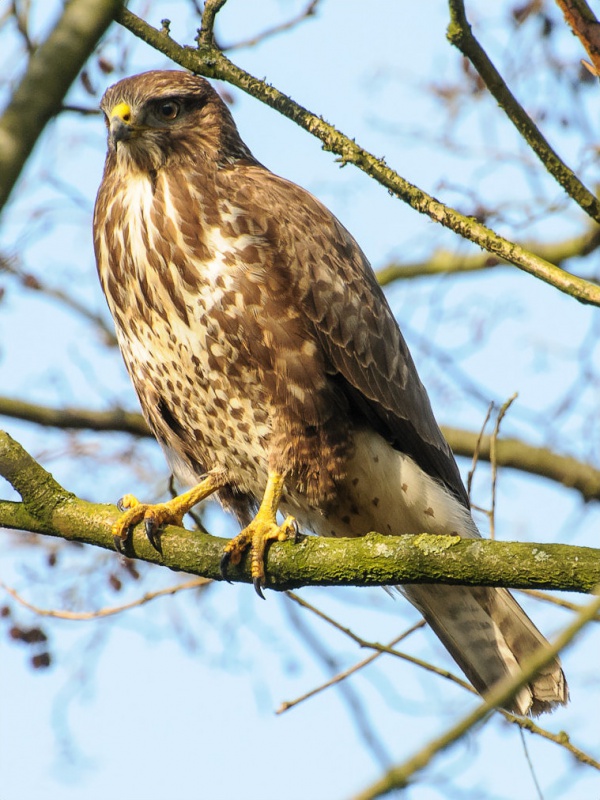Facts About Common buzzard
The common buzzard (Buteo buteo) is a fascinating bird of prey found throughout Europe and parts of Asia, including the Russian Far East, northwestern China, and Mongolia. As a member of the Accipitridae family and the Buteo genus, this bird exhibits interesting behaviors and adaptations.
Many common buzzards are sedentary, but individuals from colder regions often migrate south for the winter, sometimes reaching as far as South Africa. This bird is an opportunistic hunter, primarily preying on small mammals such as rodents. It is frequently observed perched, scanning for its next meal. Nesting in trees, the common buzzard is known for being a dedicated parent. With a population numbering in the millions, it is the most prevalent diurnal raptor in Europe.
The common buzzard was first described by Carl Linnaeus in 1758, with the genus Buteo established by Bernard Germain de Lacépède in 1799. DNA studies reveal its close relationship to the red-tailed hawk of North America and a complex relationship with African buzzards, such as the mountain and forest buzzards.
There are several subspecies of the common buzzard, divided into two primary groups: the western buteo group and the eastern vulpinus group. The western group includes B. b. buteo, B. b. rothschildi, B. b. insularum, and B. b. arrigonii, while the eastern group encompasses the steppe buzzard (B. b. vulpinus) and B. b. menetriesi. These subspecies vary in size, plumage, and migratory behaviors.
One of the standout features of the common buzzard is its wide range of plumage variations. They can be dark brown, almost white, or any shade in between, with diverse patterns and markings. The steppe buzzard, a subspecies, is particularly notable for its polymorphic nature, exhibiting rufous, pale, and dark morphs.
Common buzzards are highly adaptable and can inhabit various environments, including woodlands, open fields, moorlands, and mountainous areas. They can be found from sea level up to elevations of 2,000 meters and occasionally higher during migration.
Behaviorally, the common buzzard is often seen soaring or perched and is generally considered a sluggish bird. It is a partial migrant, with migration patterns influenced by food availability, competition, and weather. It communicates with a plaintive call, especially during aerial displays.
The common buzzard has a diverse diet, consuming small mammals, birds, reptiles, amphibians, and even insects and carrion. Voles are a particularly significant part of its diet across Europe.
For breeding, the common buzzard constructs bulky nests in trees or on cliffs. Clutches typically range from 2 to 6 eggs. The breeding season varies with latitude, with incubation lasting about 33-35 days. Fledging occurs around 43-54 days after hatching, and juveniles remain dependent for several weeks after leaving the nest.
The common buzzard contends with competition and predation from other raptors like northern goshawks and eagle-owls. Despite these challenges, it is a highly adaptable and resilient species.
In terms of conservation, the common buzzard is one of the most numerous raptors in Europe, with populations in the millions. It serves as a bioindicator due to its sensitivity to environmental changes and pollutants. While it faces some threats from habitat loss and persecution, overall, the species is thriving across its range.

 Bosnia and Herzegovina
Bosnia and Herzegovina